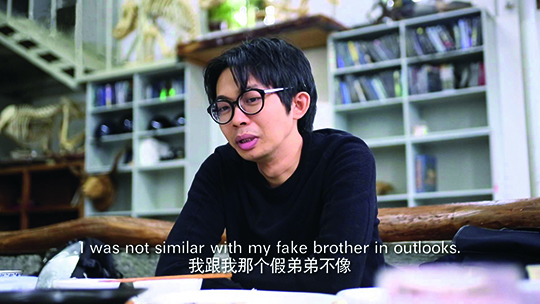UNLIVED BY WHAT IS SEEN
| March 25, 2015 | Post In LEAP 31
GALLERIA CONTINUA, PACE BEIJING, AND TANG CONTEMPORARY ART CENTER
2014.12.13~2015.03.15

“Unlived by What is Seen” is an ambitious undertaking in its engagement with the mechanics of the art industry. Significant in both scale and forcefulness, its approach is a clear extension of Sun Yuan and Peng Yu’s existing body of work. There is the same sense of reverential wonder accompanied by an inclination to poke at the sensitive and controversial while taking penetrating, collaborative action across organizations. Their counterpart, breakout curator Cui Cancan, completes the picture in selecting and consuming resources available to the show.
This exhibition is a portrait of a social group without finished products, told from a spectrum of first-person narratives. Content provided is, in the words of the curators, less about “the artist’s special life and role within society” and more about “the artist’s considerations of society from within the studio.” From the selection of artists to the coordination of cooperation between three of the largest galleries in 798 and the completion of a promotional film, the curators appropriate a variety of props to relay a personal message. Sun Yuan and Peng Yu are good at positioning works within their chosen thematic framework and maintaining control over their material, but it is exactly this potency that allows the curatorial concept to be undermined by its own text, lacking as it does a structure to match the force of its intention.
With video, photography, found and fabricated objects, site-specific installation, and supplementary material from a whopping 34 participants, the exhibition produces an extraordinary amount of reading material for audiences within and outside the art industry. Dramatic original stories serve to satisfy some viewers’ romanticized notions of the life of the artist, while variants of performance art satisfy others. But there is no discernible correlation between the performance art movement of the last century and the timeframe to which the exhibition refers—the post-2008 era following the aftershock of economic crisis. The content framed here exceeds the amount of information and degree of complexity a single art exhibition could possibly accommodate. In the exhibition’s promotional clip, we see a medley of sound bytes offering comparisons to a discussion triggered by Sun Yuan and Peng Yu’s exhibition “Indulge in Hurt” in 2000, detaching the show from its ostensible moment and leaving it alone to agree with itself.
Though it comes equipped with press releases, public conferences, and publishing strategies, “Unlived by What is Seen” is less a group exhibition than a large-scale site-specific installation by Sun Yuan and Peng Yu—perhaps the solo exhibition to end all solo exhibitions. Its significance lies in the fact that, despite its scale, extravagance, and public relations management, it exists neither for commercial values nor for academic discussion. There is little precedent, and there may not be anything like it again. Perhaps the only constructive thing about the exhibition is its existence. But what is the difference between a man taking a knife to another man’s back and an artist taking a knife to another artist’s back? Is there any argument for the importance of the latter?
We all know that images are everywhere, that there is no end to art, and that painting will never die, and yet questions of this ultimate nature are asked and answered time and again, heralded each time as fresh discussions. If craving for change stimulates creation, here the experience is of the joy of adventure for its own sake.
Zhang Xiyuan (Translated by Katy Pinke)

